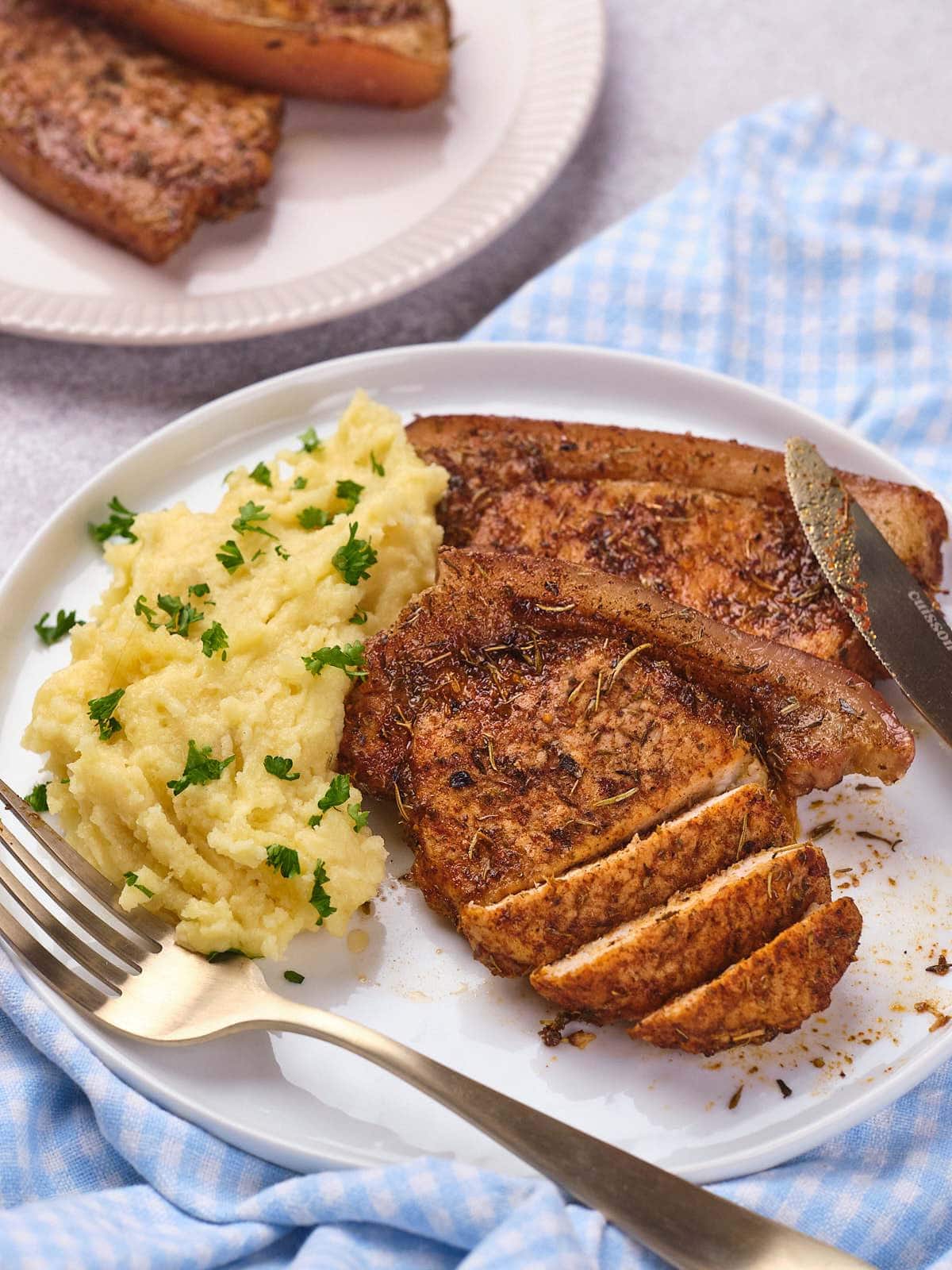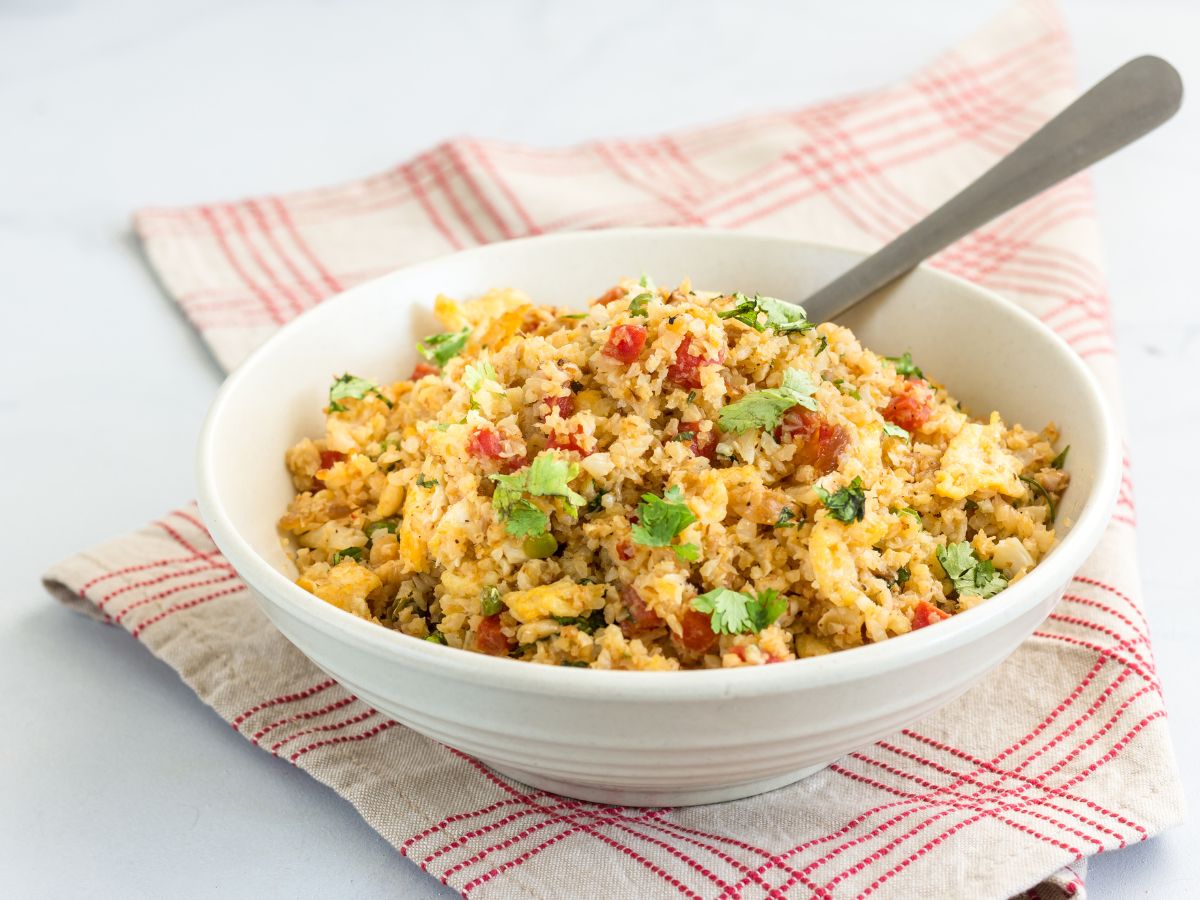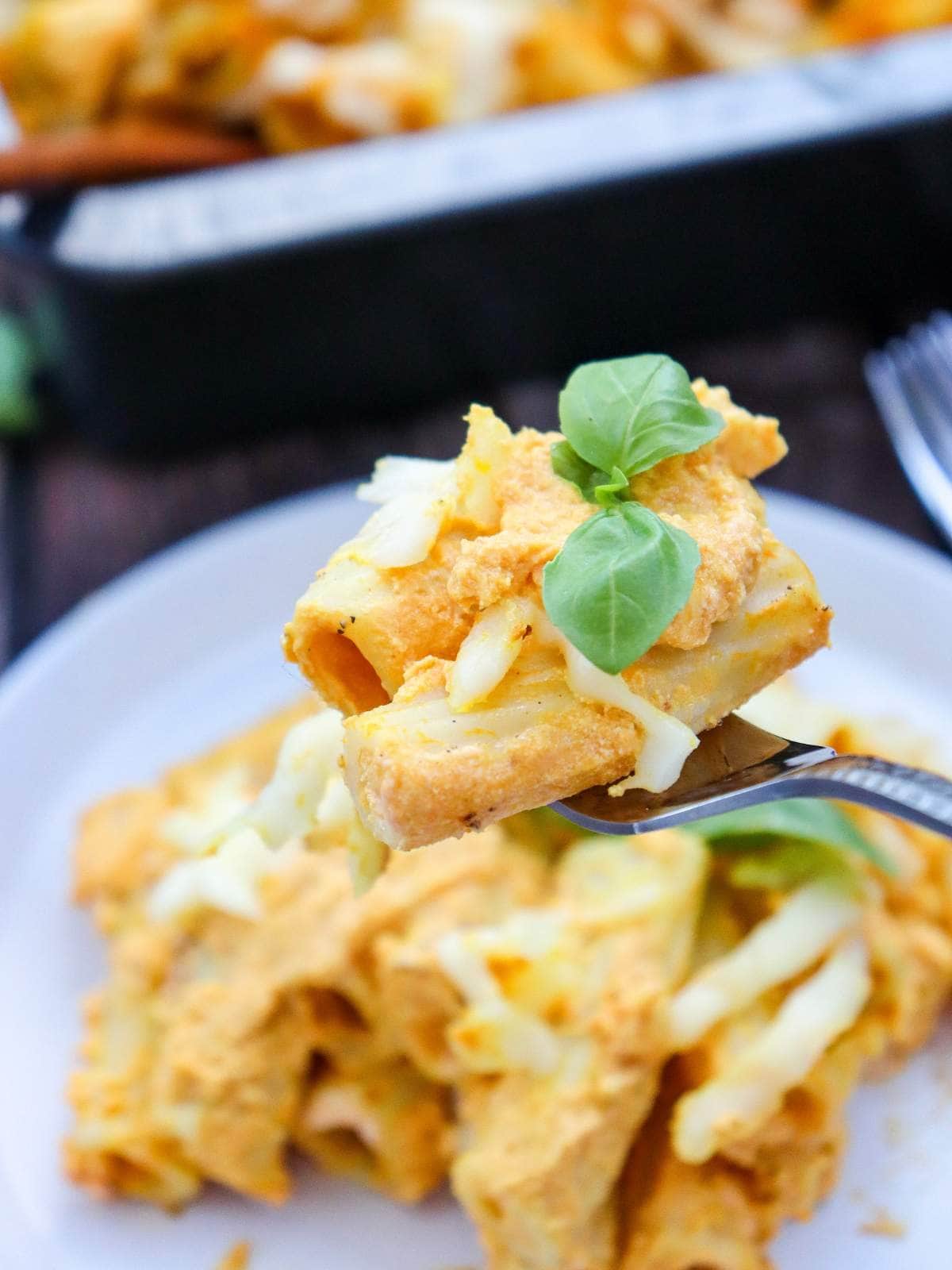Roasted Turkey Made Easy For Beginners
As a participant in the Amazon Services LLC Associates Program and other affiliate programs, Easy Homemade Life may collect a share of sales or other compensation from the links on this page. This comes at no additional cost to you, and all the prices and availability are accurate at the time of publishing.
Roasting a turkey doesn’t have to be complicated. This easy recipe breaks it down so you can roast a perfectly crispy, juicy turkey without the stress. Whether it’s Thanksgiving, Christmas, or just a special family dinner, this one’s got you covered. With simple flavors like butter, garlic, fresh herbs, and a hint of lemon, it’s not just delicious—it’s foolproof. You don’t need to be a pro in the kitchen to pull off something that looks this good and tastes even better.
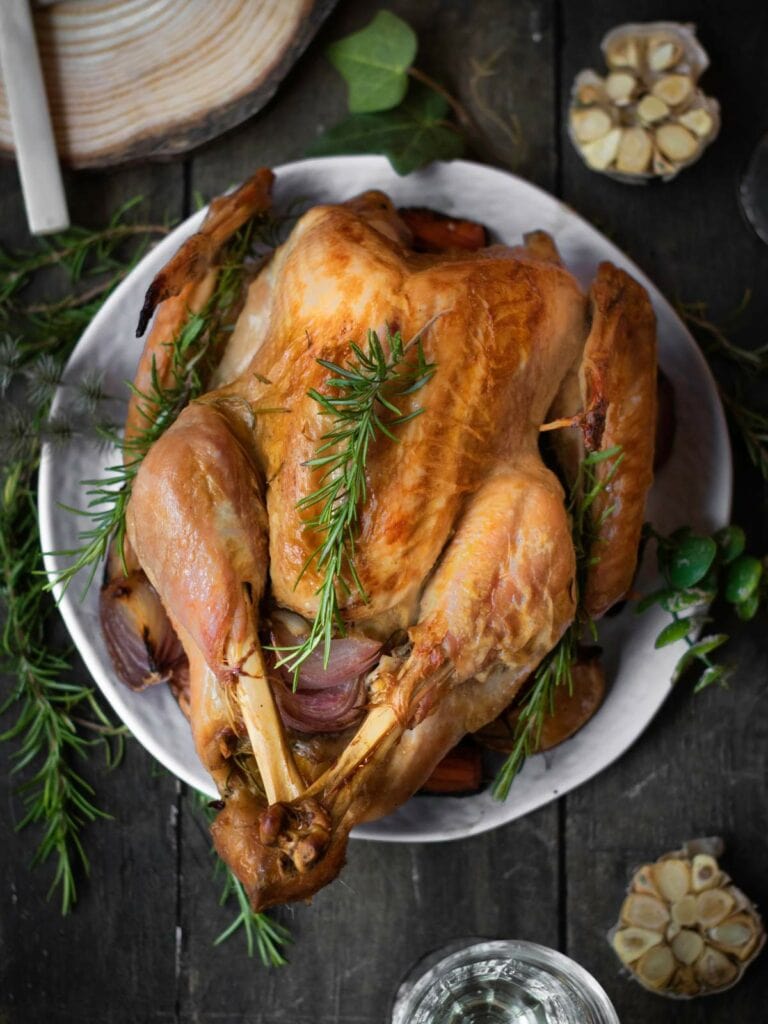
I get it—turkey can seem like a lot, but it doesn’t have to be. I’ve turned it into a fun little tradition with my kids, and honestly, it’s one of my favorite parts of the holidays, along with making holiday ham, of course!
But even if you’re just looking to get it done quickly and painlessly, this recipe has your back. It’s easy, it’s satisfying, and it’s going to impress your crew. Let’s make this the year you actually enjoy roasting a turkey!
Why You’ll Love This Recipe
- Perfect for any cook: Whether you’re a pro in the kitchen or a first-timer, this recipe makes roasting a turkey simple and stress-free. With clear steps and helpful tips, you’ll feel confident from start to finish.
- Always tender and juicy: No more dry turkey. A buttery rub and slow roasting keep this turkey moist, tender, and juicy—exactly how it should be.
- Packed with flavor: This turkey is all about bold, savory goodness. Brushed with butter, seasoned with the perfect blend of spices, and stuffed with fresh herbs and veggies, every bite is tender and flavorful.
- Seasoning made dimple: Whether you stick with classic fresh herbs or mix it up with bold spices, this recipe lets you tailor the flavors to suit your style.
- Homemade and meaningful: Roasting your own turkey is more than just cooking—it’s about creating something special. You control every detail, making it a personal, heartfelt addition to your table.
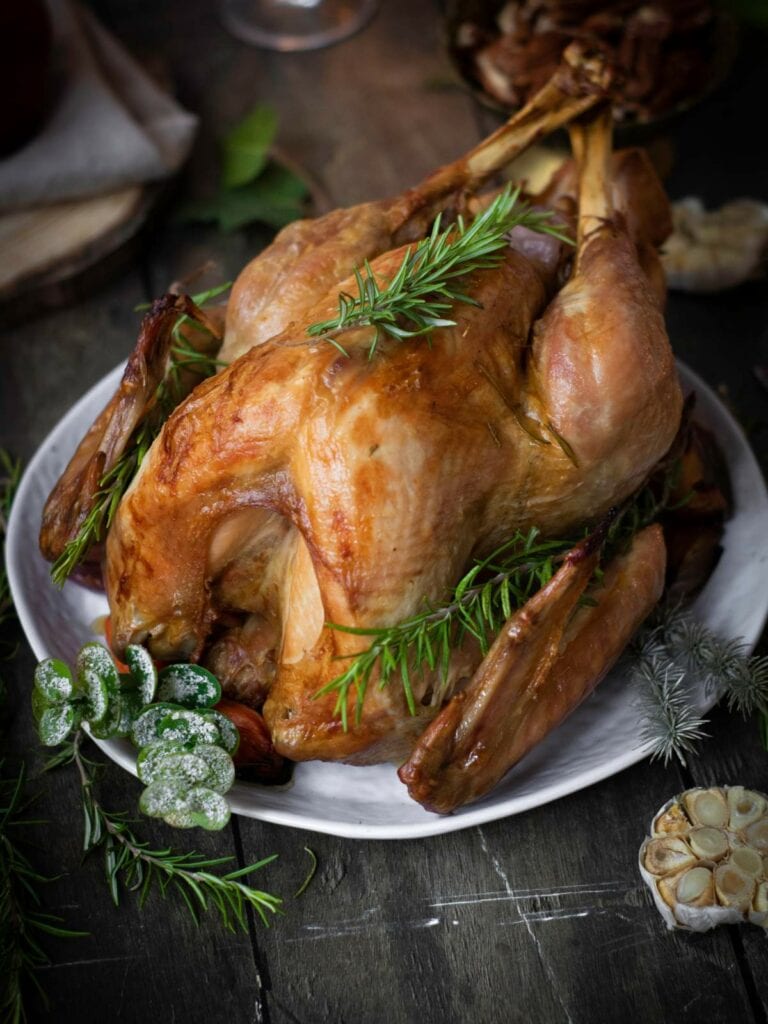
How to Make Roasted Turkey
If you’re looking for a roasted turkey recipe that’s simple, reliable, and downright delicious, this is it. Whether you’re hosting your first holiday or you’re a seasoned pro, this recipe takes the guesswork out of roasting a turkey. From brining to seasoning to roasting, every step is designed to make the process easy while delivering a turkey that’s juicy, tender, and packed with flavor.
Scroll down for a printable recipe card with all the details, so you can make a beautiful turkey that’s as impressive as it is stress-free. Let’s make this your best holiday yet!
Ingredients You Need
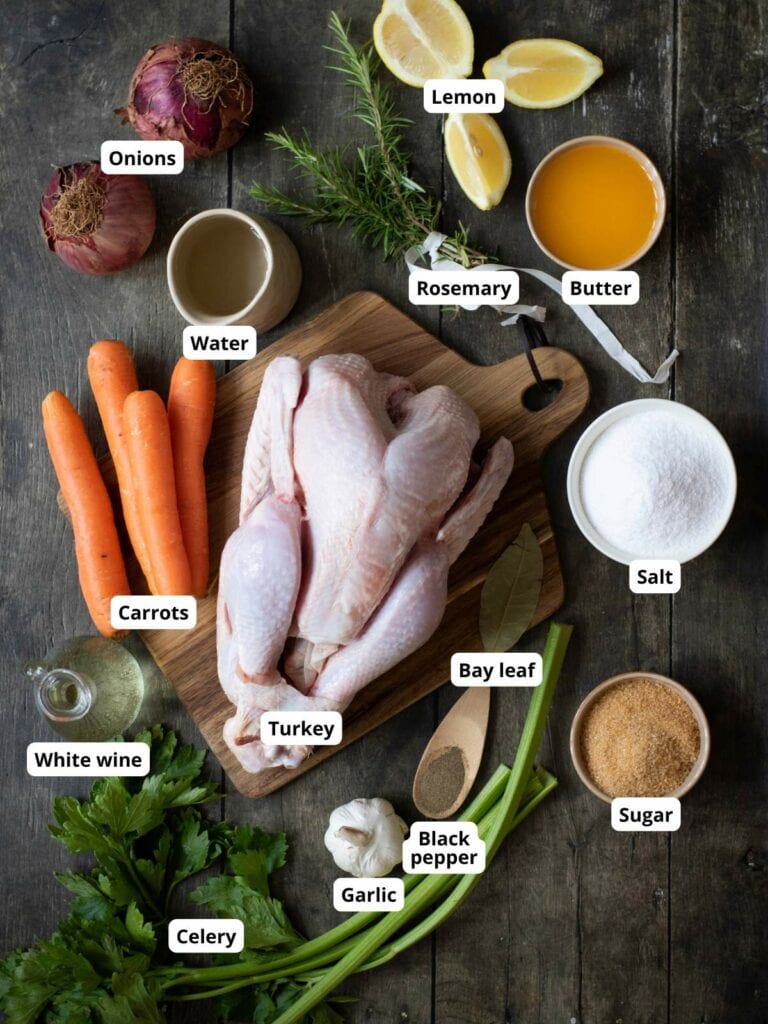
- Turkey: A whole turkey, either fresh or frozen. If you’re going with frozen, just make sure it’s completely thawed before you start roasting. Check the tips below for how to thaw it safely.
- Sea salt
- Brown sugar: This adds just the right hint of sweetness to balance out the savory flavors and helps give the skin that gorgeous caramelized look.
- Butter: Butter does it all—it adds rich flavor, keeps the skin nice and crispy, and makes sure those herbs and seasonings really sink into the meat.
- Onion & garlic: These aromatics go inside the turkey and in the roasting pan, giving the meat and drippings an amazing savory kick.
- Carrots & celery: These veggies add a subtle sweetness and depth to the turkey juices as they roast. They’re simple but make a big difference!
- Rosemary: Fresh rosemary is the way to go for that bright, earthy flavor that makes the turkey taste incredible. You can use dried if that’s all you have, but fresh really takes it up a notch.
- Lemon: A little lemon brings a bright, fresh flavor that cuts through the richness of the butter and herbs, making the turkey feel light and balanced.
- Dry white wine: Adds a bit more acidity and depth to the turkey’s flavor while making it smell even more amazing as it roasts.
- Ground black pepper
Step-By-Step Instructions
Forget overcomplicated recipes—this one breaks it down into straightforward steps anyone can follow. Follow the steps below, and by the end, you’ll have a beautiful centerpiece that tastes even better than it looks.
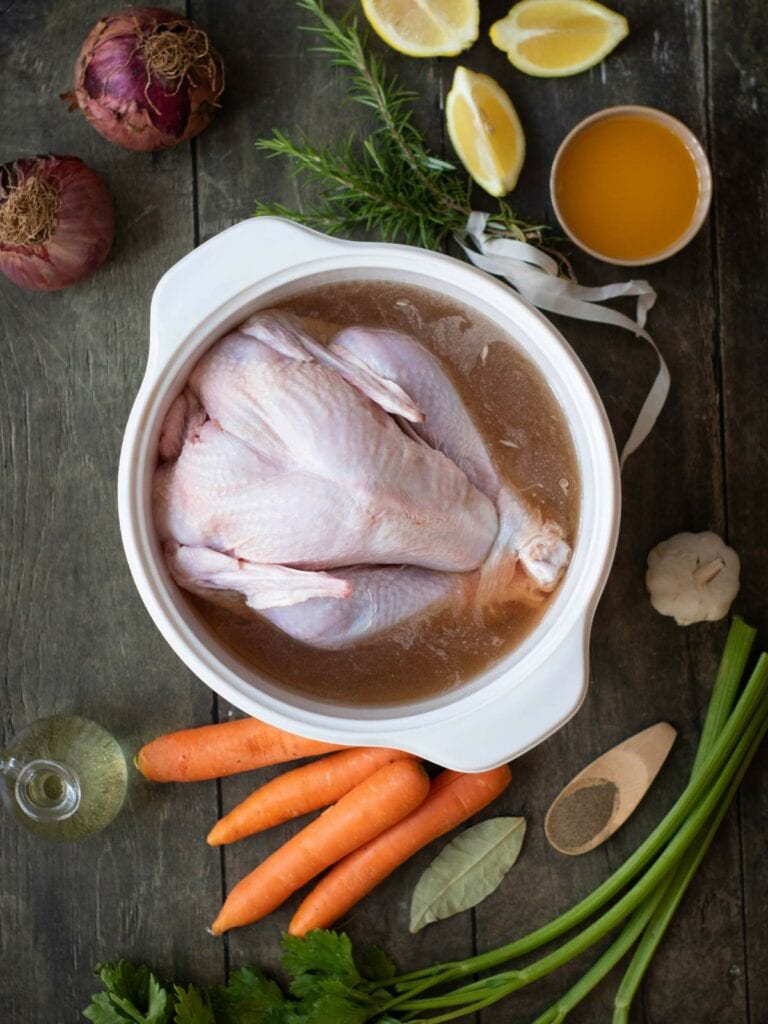
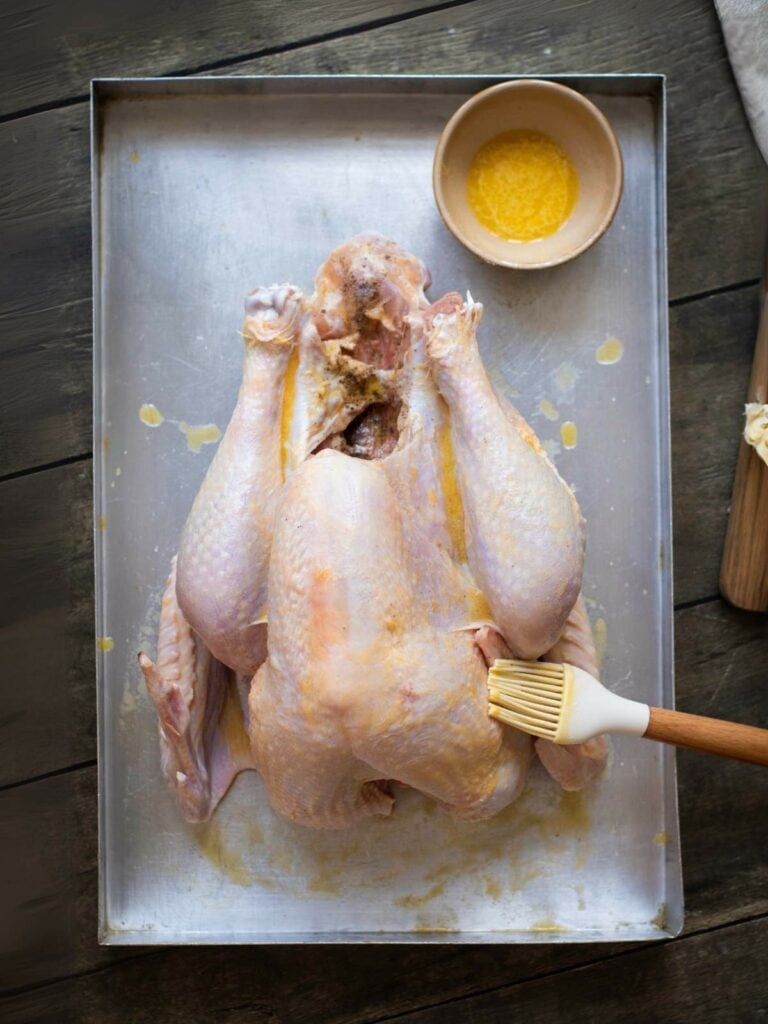
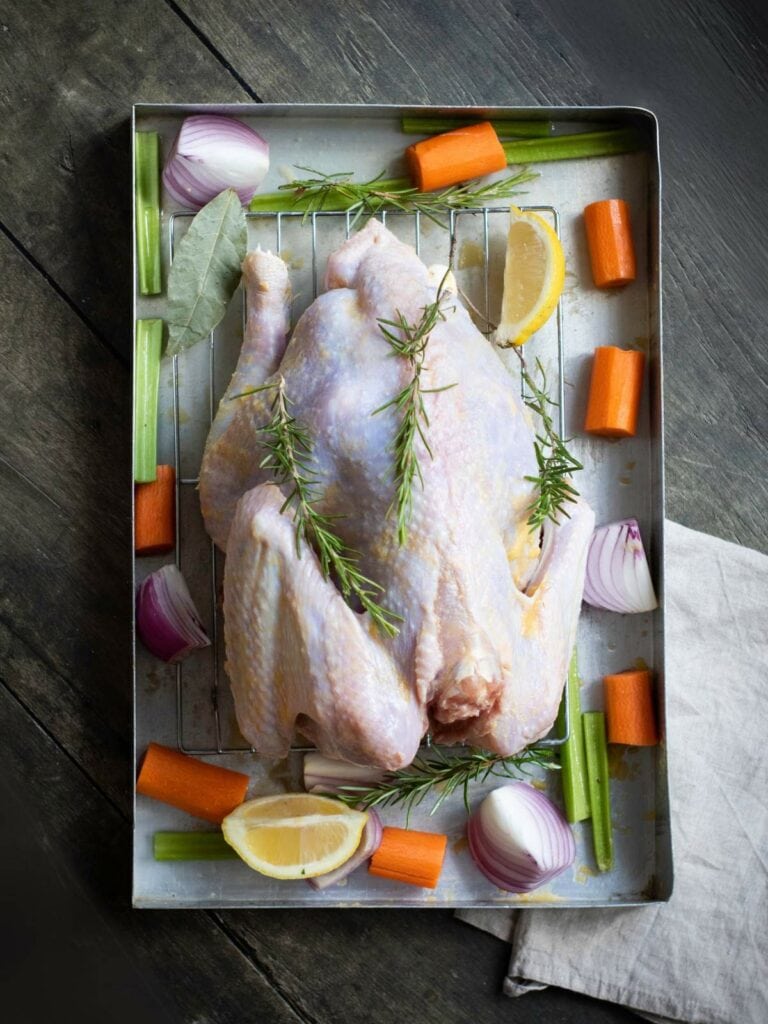
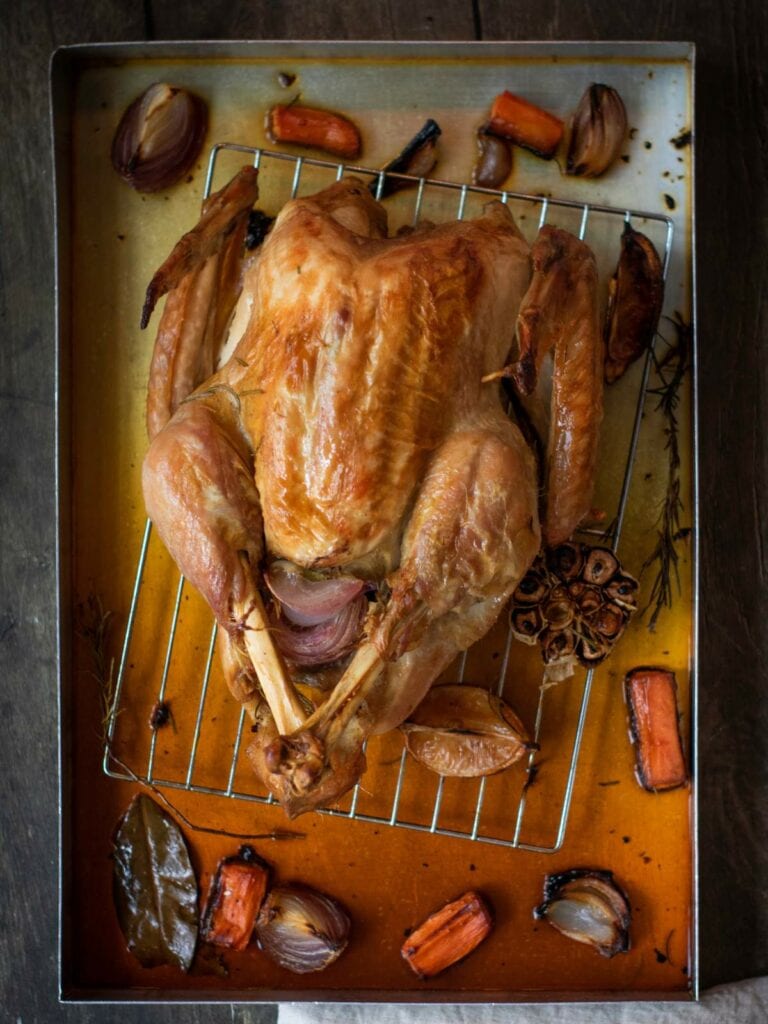
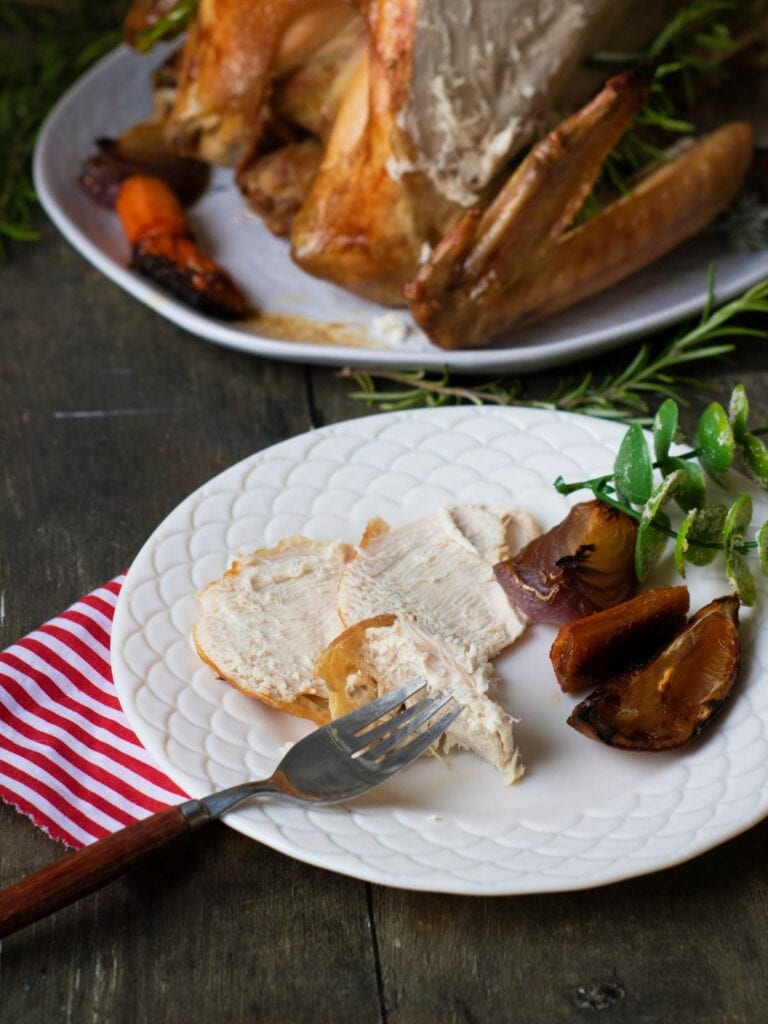
Step 1: Brine
Start by mixing sea salt, brown sugar, and cold water in a large stockpot and stir until fully dissolved. Submerge your turkey in the brine solution, cover, and refrigerate for 12 hours or overnight.
Step 2: Prep
Preheat your oven to 350 F (175 C). Take the turkey out of the brine, rinse it thoroughly under cold water, and pat it dry with a paper towel. Discard the brine.
Brush the turkey, inside and out, with half of your melted butter, and sprinkle freshly ground black pepper into the cavity.
Step 3: Stuff
Fill the turkey cavity with a chopped onion, carrots, celery, lemon quarters, a sprig of rosemary, and half a garlic head.
Place the turkey breast-side down on a roasting rack in a shallow pan. Scatter the remaining veggies, rosemary, and a bay leaf in the pan. Pour dry white wine over the vegetables for extra aroma and flavor.
Step 4: Roast
Pop the turkey in the oven, uncovered, and let it roast for 3.5 to 4 hours.
Around two-thirds of the way, carefully flip the turkey breast-side up and brush on the remaining melted butter. Your turkey is ready when the juices run clear, and a thermometer in the thickest part of the thigh reads 165 F (74 C).
Step 5: Rest and serve
When the turkey is cooked, take it out of the oven and let it rest for 30 minutes before carving—this step is a must for juicy, flavorful meat.
Arrange the carved turkey on a platter with the roasted veggies and enjoy!

Substitutions
This recipe is all about keeping it simple, stress-free, and full of flavor—using ingredients you likely already have in your kitchen (turkey aside, of course!). Don’t stress if you’re missing something or want to switch it up a bit. Here’s how to make easy substitutions that stay true to the recipe’s delicious, homemade vibe:
- Brown sugar: Swap it with honey or maple syrup for a natural sweet touch. Just use a little less so the flavor isn’t too strong.
- Butter: No butter on hand or going dairy-free? Try olive oil or a plant-based butter for that same rich texture.
- Veggies: Don’t feel stuck with carrots and celery—sweet potatoes, parsnips, fennel bulbs, or even green bell peppers work perfectly. Want a sweeter vibe? Add apples!
- Rosemary: No fresh rosemary? Go with dried (use half the amount), or try thyme, sage, tarragon, parsley, or oregano for a different herbal kick.
- Lemon: Oranges or limes are great substitutes if you’re out of lemons. They bring their own refreshing twist.
- Dry white wine: No wine? Chicken broth with a splash of white wine vinegar or apple cider vinegar works like magic to add that same depth.
If cooking a whole turkey is too intimidating, bring the portion size down a little and make a smoked turkey breast instead. You’ll get all the festive flavor without needing to work with such a large quantity of meat.
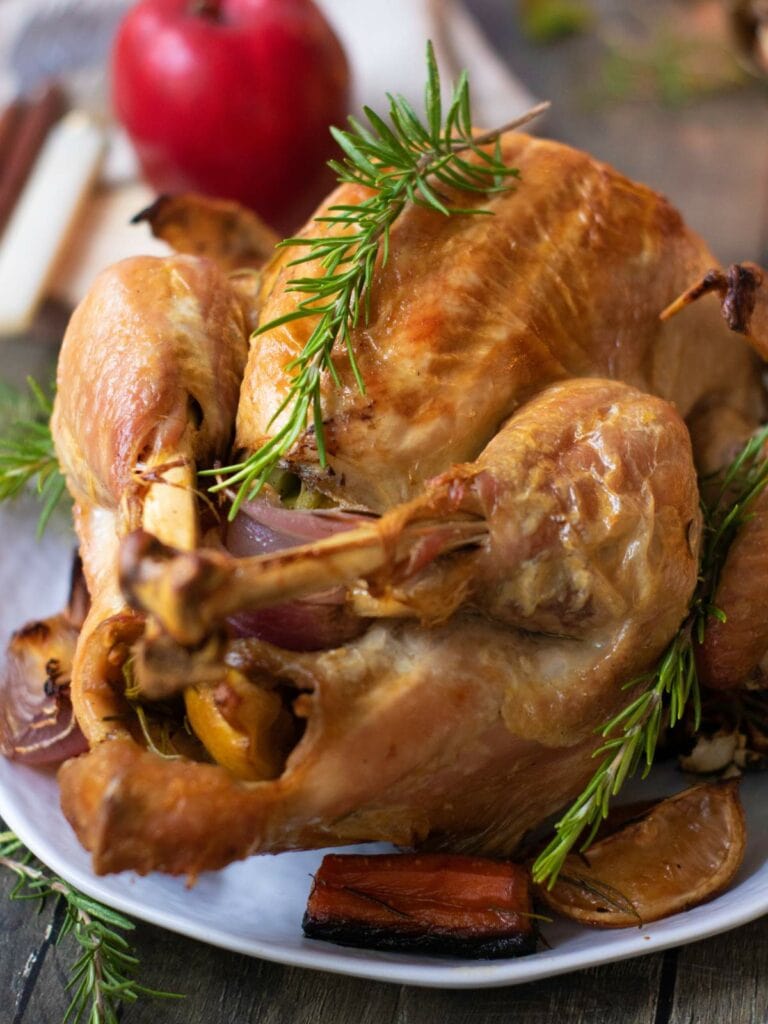
Expert Tips
- Don’t wash: It might feel like you should rinse your turkey before cooking, but don’t! Washing it can actually spread bacteria around your kitchen. The oven’s heat will take care of any bacteria, so no need to worry.
- Give it time to thaw: Thawing takes longer than you think—plan for one day in the fridge for every 5 pounds of turkey. For an 18-pound turkey (like in this recipe), you’ll need about 4 days. Factor in brining and prep time, and buying your turkey at least a week ahead will save you a lot of last-minute stress. Decorate your home with bold new Thanksgiving colors while waiting!
- Watch the skin: If the skin is browning faster than the turkey is cooking, just cover it loosely with foil. This protects it from burning while the turkey finishes roasting perfectly.
- Cook stuffing on the side: Cooking stuffing separately keeps things simple and tasty. When cooked inside the turkey, stuffing can take longer to reach a safe temperature, risking dry turkey or underdone stuffing.
- Let it rest: After the turkey comes out of the oven, give it a break! Cover it loosely with foil and let it sit for at least 30 minutes. This makes carving easier and keeps the meat juicy and flavorful.
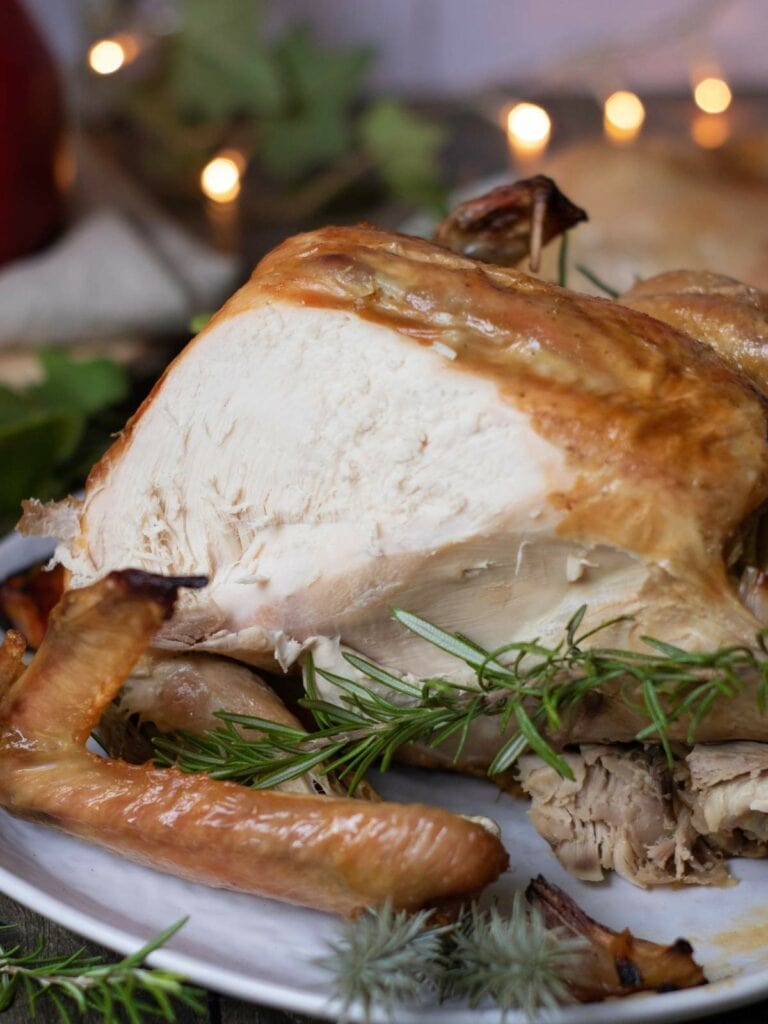
How to Store This Recipe
If you’re lucky enough to have leftovers from this roasted turkey, here’s how to store and reheat them so they taste just as good the second time around. Start by slicing the meat off the bone and transferring it to an airtight container.
In the fridge, it’ll stay fresh for up to 4 days. Want to save it for later? Cool the turkey in the fridge for about an hour, then pop it into a reusable freezer bag. It’ll keep well in the freezer for up to a month.
When you’re ready to enjoy the leftovers, warm them up the right way. Place the turkey in a baking dish, add a splash of turkey or chicken broth to keep it juicy, and cover the dish with foil. Heat gently in a 300 F oven until it’s warmed through.
For frozen turkey, make sure to thaw it in the fridge for 1 to 2 days before reheating (depending on the amount). And skip defrosting on the counter—keeping things safe is key to enjoying those leftovers!
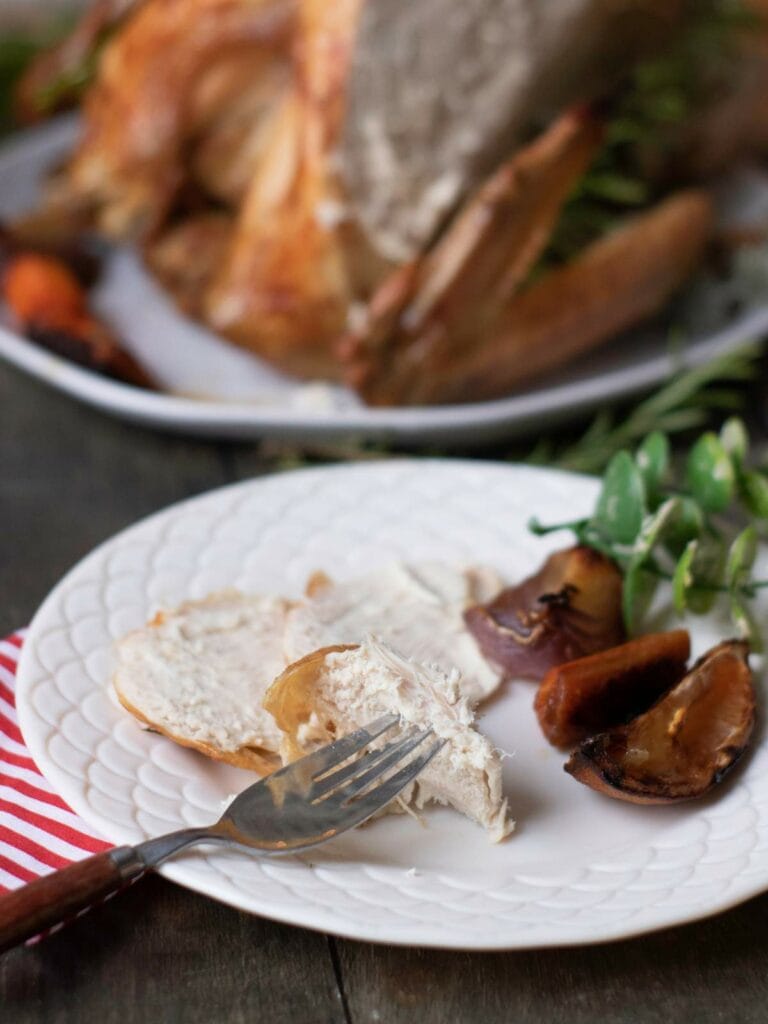
What to Serve with Roasted Turkey
Roast turkey takes center stage at any holiday table, and the sides are what make the meal complete. Classic options like French onion soup, oven-roasted vegetables, and make-ahead mashed potatoes are always crowd-pleasers.
For something simple and flavorful, you can’t go wrong with air fryer sweet potato fries, carrot raisin salad, pumpkin pasta, or broccoli rice casserole. To top it off, pair your meal with a seasonal drink like eggnog. With these easy, inviting options, you’ll have a meal that feels both special and stress-free!
More Thanksgiving Recipes To Try
I’d love to hear how your roasted turkey turns out! Your feedback matters, and every 5-star rating or thoughtful review helps others feel confident about trying this recipe too.
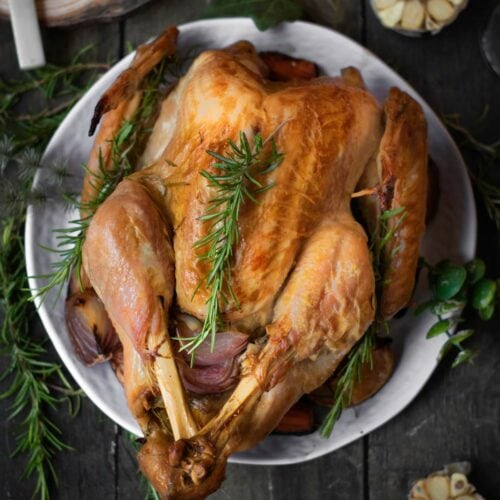
Roasted Turkey Made Easy and Stress-Free
Ingredients
- 1 whole turkey about 18 pounds, neck and giblets removed
- 1 ½ cups sea salt
- ½ cup brown sugar
- 4 quarts cold water
- ½ cup unsalted butter melted, divided
- 2 large onions chopped, divided
- 4 medium carrots coarsely chopped, divided
- 4 stalks celery chopped, divided
- 3 sprigs fresh rosemary divided
- 1 whole lemon quartered
- 1 head garlic halved horizontally
- 1 bay leaf
- 1 cup dry white wine
- 1 pinch ground black pepper to taste
Instructions
- Start by mixing sea salt, brown sugar, and cold water in a large stockpot and stir until fully dissolved. Submerge your turkey in the brine solution, cover, and refrigerate for 12 hours or overnight.
- Preheat your oven to 350 °F. Take the turkey out of the brine, rinse it thoroughly under cold water, and pat it dry with paper towel. Discard the brine.
- Brush the turkey, inside and out, with half of your melted butter, and sprinkle freshly ground black pepper into the cavity.
- Fill the turkey cavity with a chopped onion, carrots, celery, lemon quarters, a sprig of rosemary, and half a garlic head.
- Place the turkey breast-side down on a roasting rack in a shallow pan. Scatter the remaining veggies, rosemary, and a bay leaf in the pan. Pour dry white wine over the vegetables for extra aroma and flavor.
- Pop the turkey in the oven, uncovered, and let it roast for 3.5 to 4 hours.
- Around two-thirds of the way, carefully flip the turkey breast-side up and brush on the remaining melted butter. Your turkey is ready when the juices run clear, and a thermometer in the thickest part of the thigh reads 165 F (74 C).
- When the turkey is cooked, take it out of the oven and let it rest for 30 minutes before carving—this step is a must for juicy, flavorful meat. Arrange the carved turkey on a platter with the roasted veggies and enjoy!
Notes
- Allow one full day in the fridge for every 5 pounds of turkey. With brining and prep time in mind, it’s best to buy your turkey at least a week before serving to avoid last-minute stress.
- Skip washing the turkey. It might feel natural to rinse it, but washing poultry can spread bacteria to your countertops and other surfaces. Trust the roasting process—oven heat will safely kill any bacteria.
- Cook the stuffing on the side. For the best flavor and texture, bake your stuffing separately. Stuffing inside the bird takes longer to cook, which can dry out the turkey or leave the stuffing undercooked.
- If the turkey skin starts to brown too quickly, cover it loosely with foil. This keeps the skin from burning while letting the bird finish roasting perfectly.
- Let it rest. After roasting, loosely cover the turkey with foil and let it sit for at least 30 minutes. This helps the juices redistribute, making the meat juicier and easier to carve.



